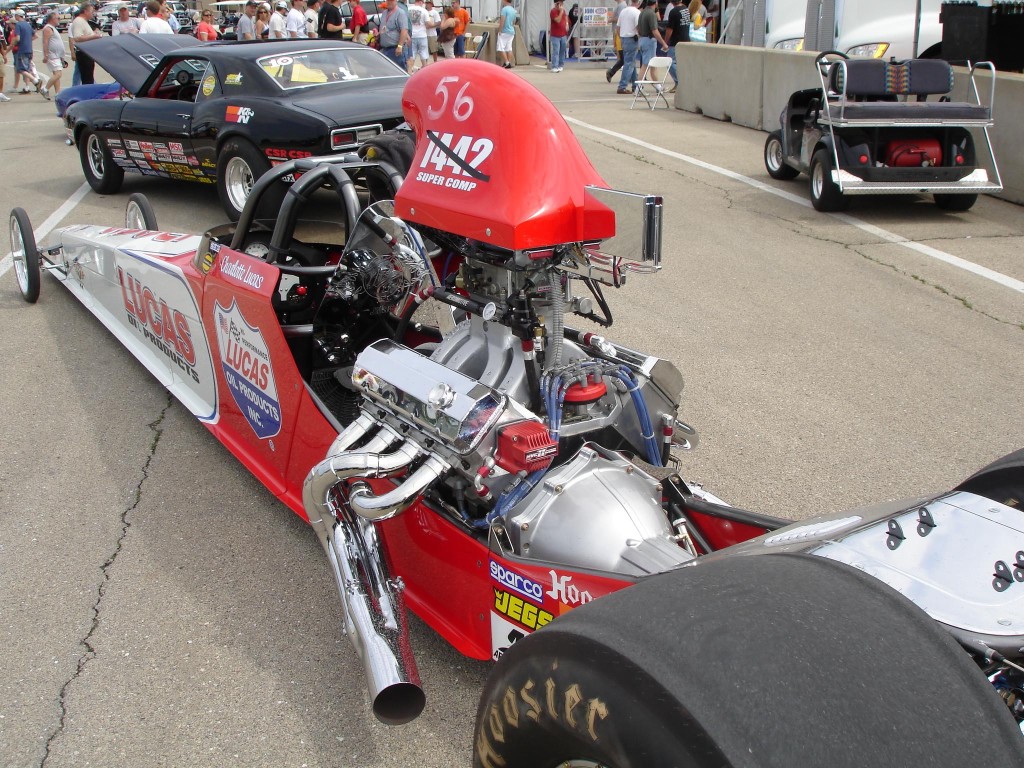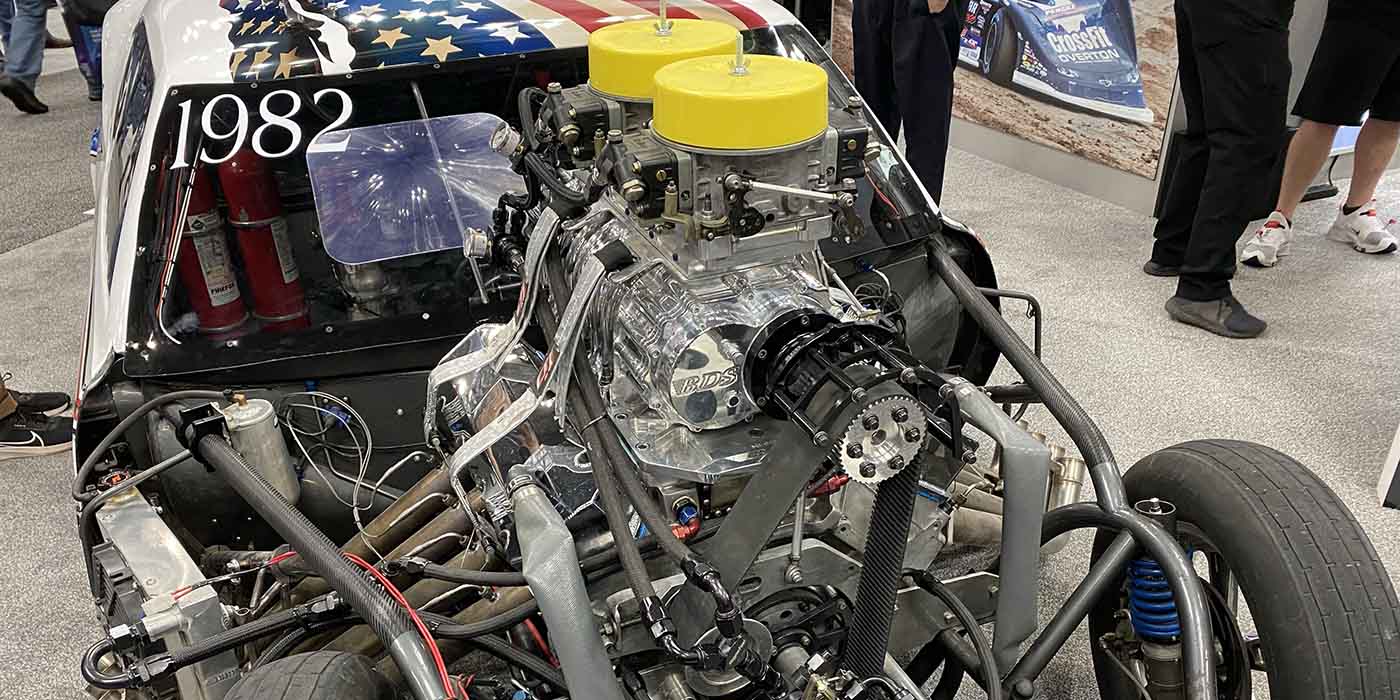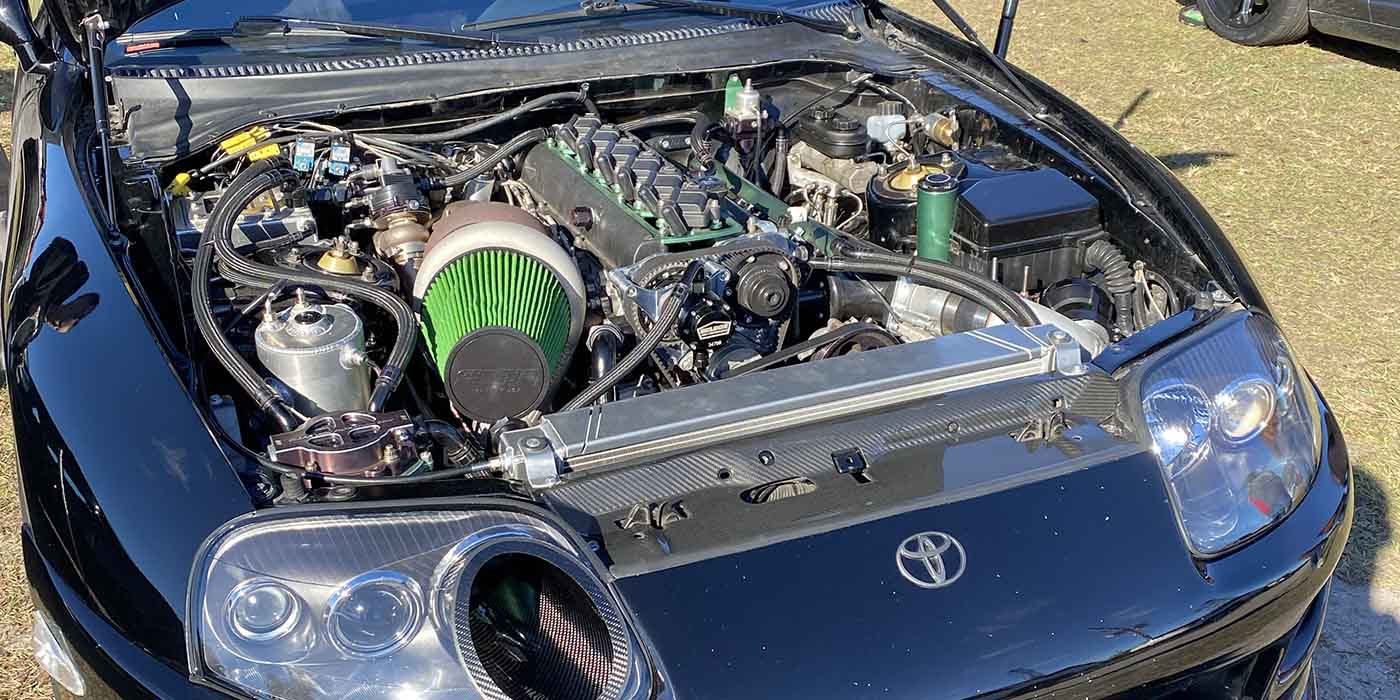“Many racers are now using some type of data acquisition system that records engine rpm, torque converter and driveshaft rpm to see if they are getting too much tire slippage,” says Kwasiborski. “This kind of information is necessary to help them dial in their cars so they will be more consistent.”
Kwasiborski says most of the dragsters in the Midwest Super Comp Series are in the 900 to 1,000 horsepower range, turning 7,500 rpm and running 160 to 180 mph with 4.10 gears. The engines are equipped with one of two kinds of throttle stops: under the carburetor or in-line. The throttle is usually CO2 operated, which controls how quickly the throttle comes on and off. “You don’t want all the power to hit the wheels all at once; otherwise you’ll lose traction,” Kwasiborski explains.
He says most of the engines are lasting up to three seasons, thanks to the fact that most of them are being cooled by radiators to keep the heat under control. “A lot of these engines have radical cams that require a lot of valve spring pressure and strong pushrods, so you have to keep an eye on the valve springs and the roller lifters,” Kwasiborski says. “But other than that, the engines hold up well.”
General Engine Building Tips
If you are building an engine for a customer who wants to race a Super Comp dragster, consistency and reliability are essential. You want a strong block (cast iron or aluminum), a strong crankshaft (forged 4340 steel), and rods (H-beam) and pistons (forged) that can take the punishment. The top compression rings should be steel or ductile iron with a moly facing to withstand the heat. The compression ratio will depend on the fuel, so if your customer wants to run alcohol or a high octane racing fuel you can run more compression.
A leaded racing fuel rated at 107 pump octane can typically handle compression ratios in the 12:1 range. Run the engine on 110 pump octane leaded racing fuel and the compression ratio can be bumped up to 13:1. Use 112 pump octane racing fuel and the engine can be built with up to a 15:1 compression ratio.
[inpost_gallery post_id=3448 group=”2″]
Oxygenated racing fuels can typically make up to 3 to 7% more power than leaded racing fuels. The higher the oxygen content of the fuel, the greater the potential power gains it can deliver. An oxygenated fuel such as E85 ethanol (85% ethanol and 15% gasoline) typically carries an octane rating of 110 (or 116 for some E90 blends). A compression ratio of 14.2:1 works well with E85.
The compression ratio will also depend on the size of the combustion chamber (small versus large) and valve overlap and timing. The higher the compression ratio, the greater the thermal efficiency of the engine and the more power it will produce.
Camshaft selection will depend on the heads and how much power you want to make. You’ll need a cam with a lot of lift and duration if you want to make 800 to 1,000 hp, but you don’t have to go crazy with lift, duration and valve spring pressure. A cam that delivers a flatter, broader torque curve will be easier to race and tune than a cam with a narrower and peakier torque curve.
A typical cam profile that is capable of producing up to 1,000 hp in a BB Chevy 565 engine would be 283/296 degrees duration at .050” lift, and .824?/.785? of lift with 1.7 ratio rocker arms.
The roller lifters and pushrods should be stout enough to handle the required valve spring pressure for up to two racing seasons. The cam drive system should also be strong and reliable, and allow easy cam timing adjustments.
Engine oiling is also critical, so you want an oil pump that will provide plenty of oil pressure and flow, and a baffled oil pan to prevent the oil from climbing up the back of the pan when the dragster is accelerating down the strip.
Since the engine is going to be turning a lot of rpms, a good balance job is critical for reliability.
Engine assembly, break in and tuning is like any other performance engine you might build. Make sure everything is thoroughly lubricated when it goes together, and that the oil system has been primed before the engine is fired up for the first time.













